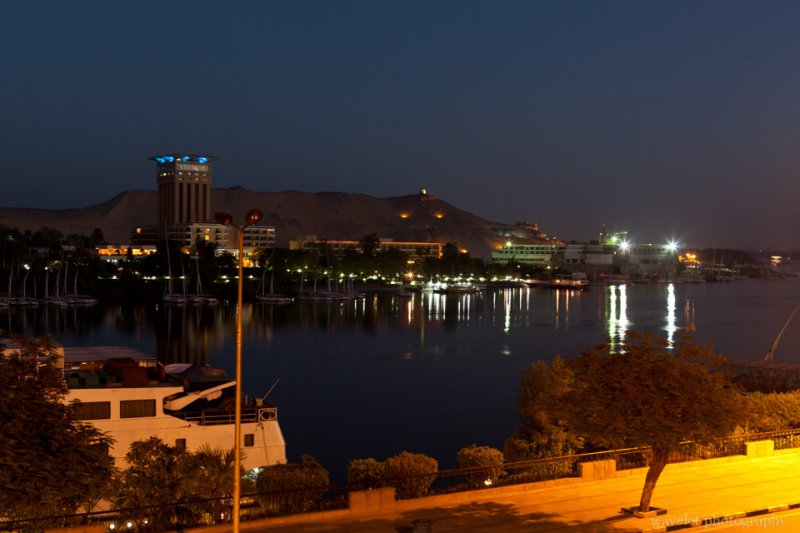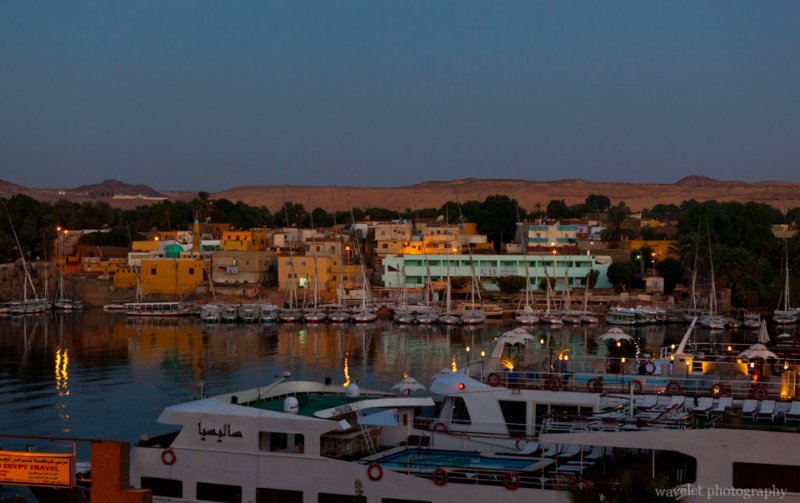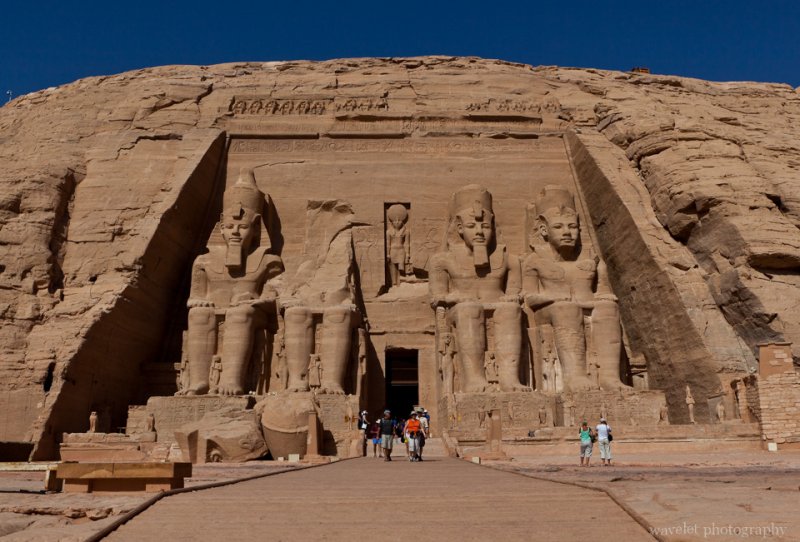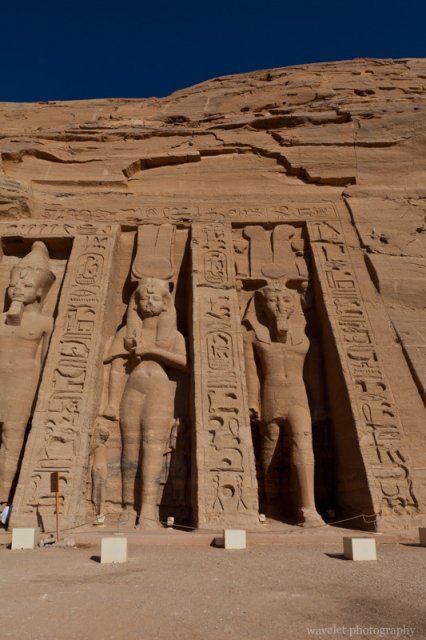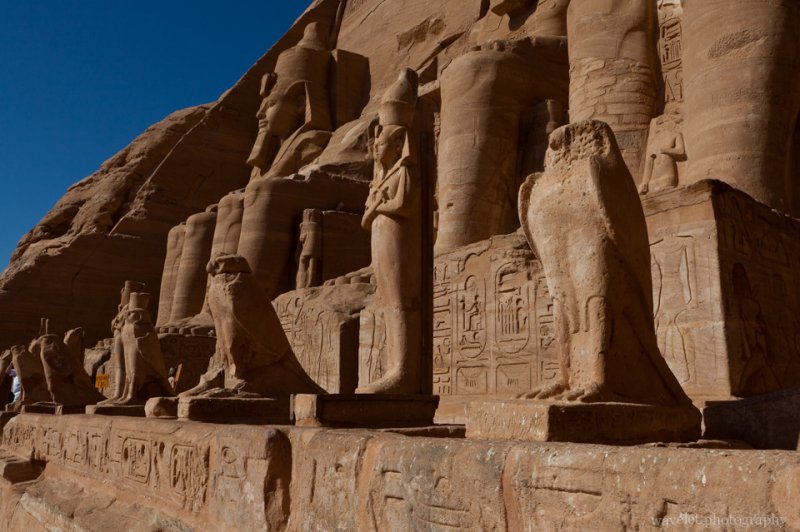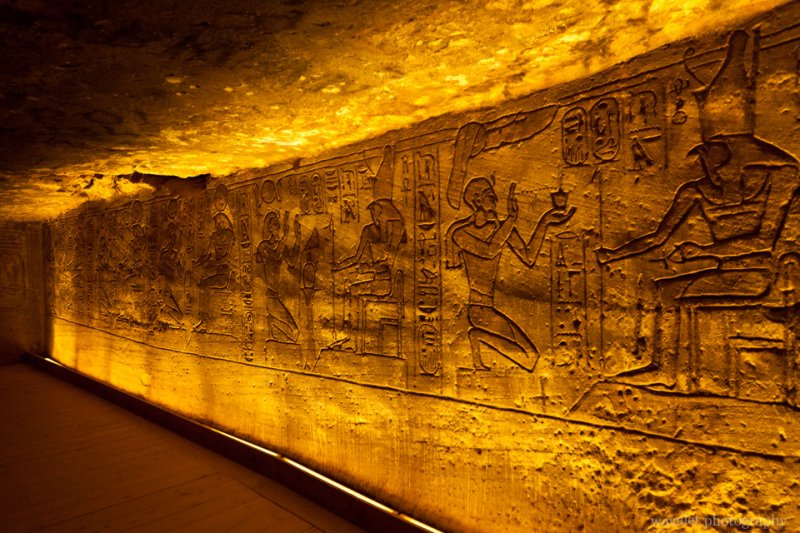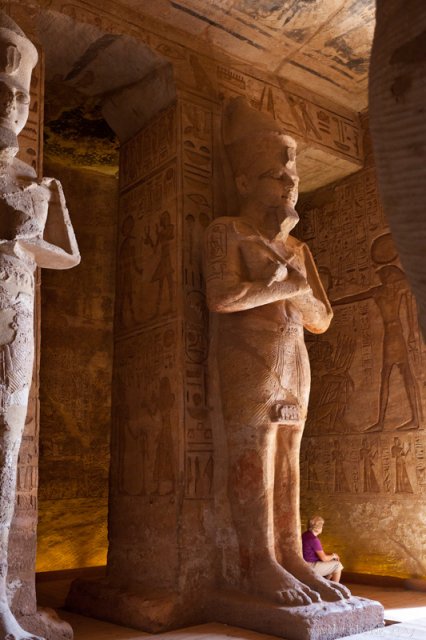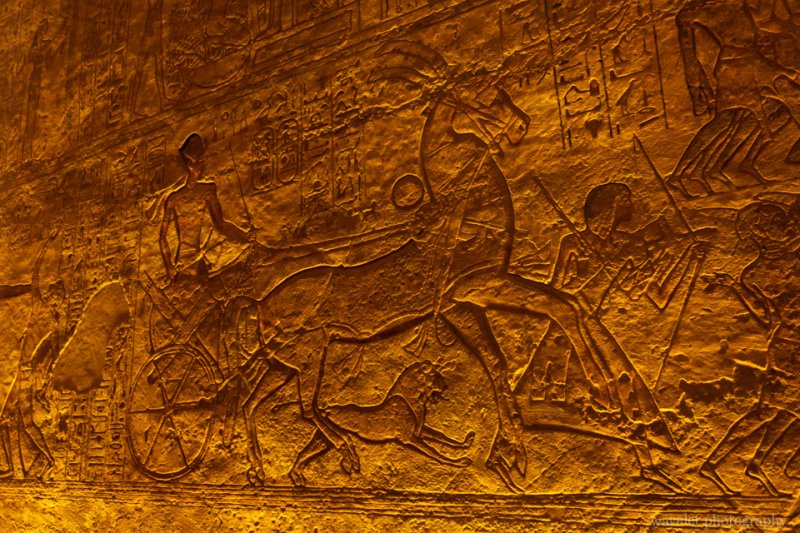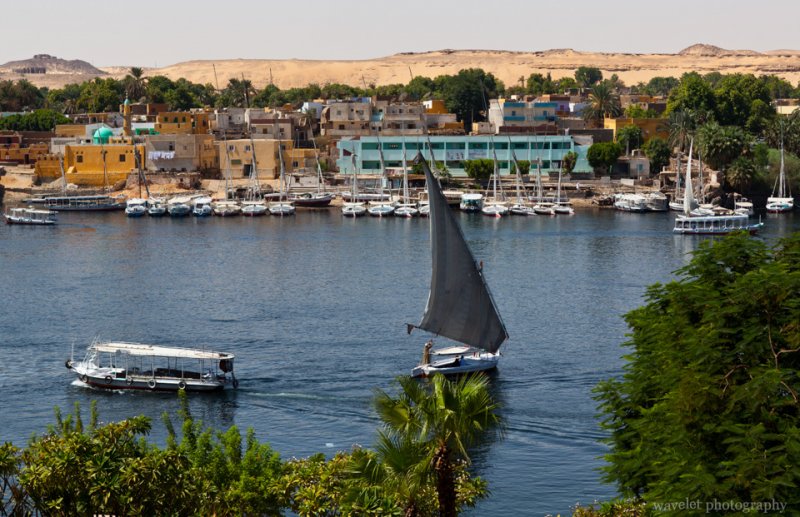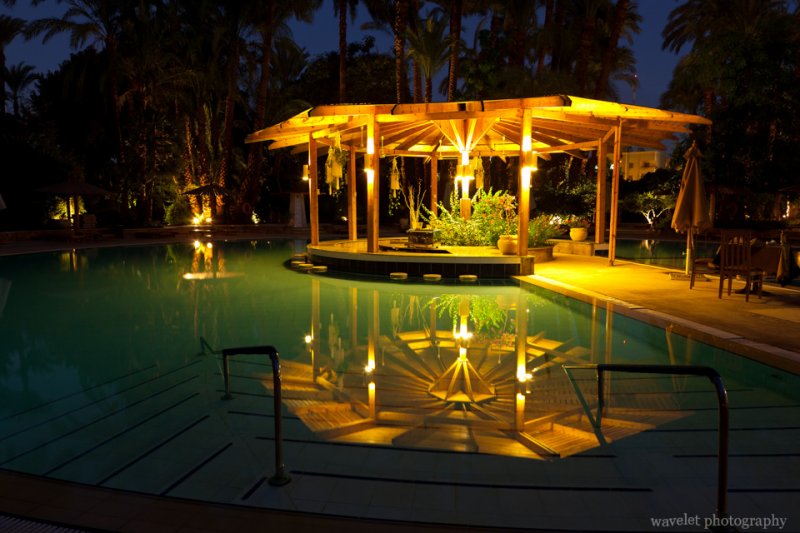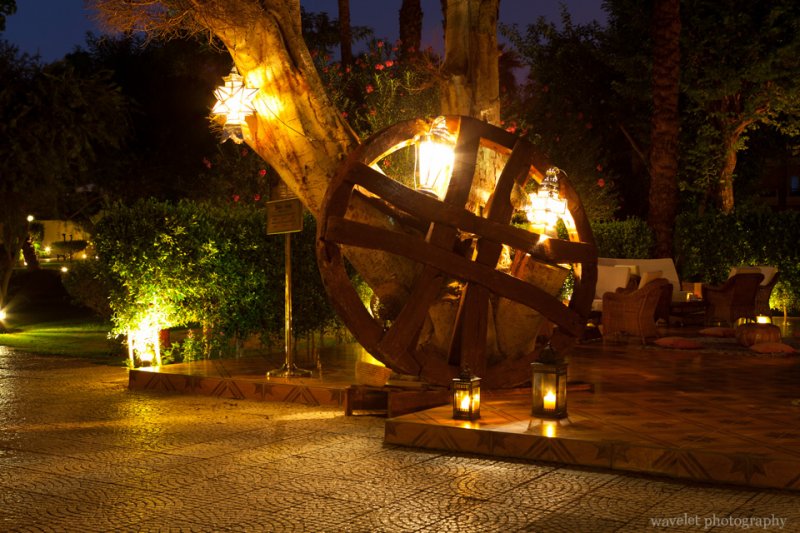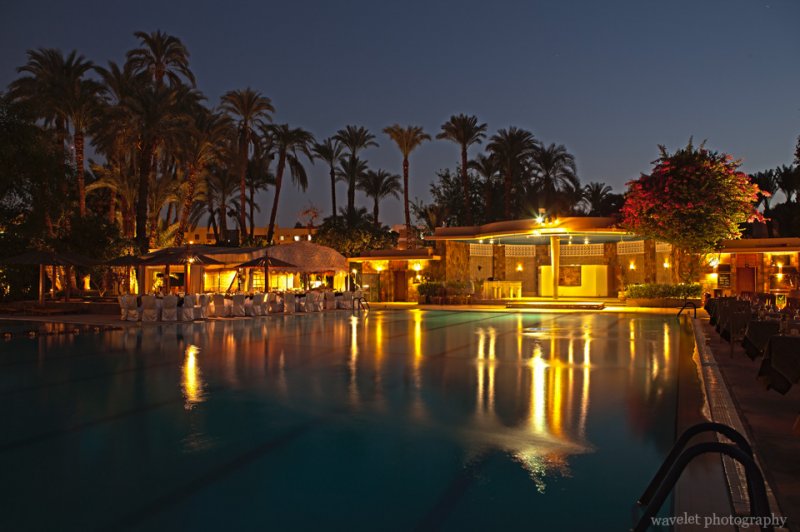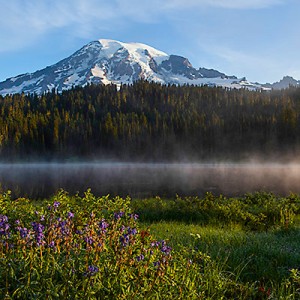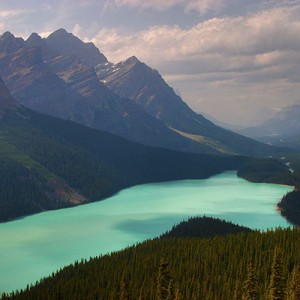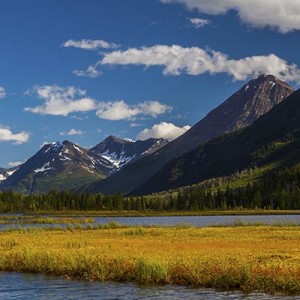2010.10.9The only reason we came to Aswan was to visit Abu Simbel. We almost excluded it from our itinerary because not only it would take one precious day from the trip but also cost us $400 more just to see it. Eventually, we arranged our plan to accommodate this visit. How could we come so far to Egypt without seeing the place that often make to the list of “things to do before you die”?
Only 30 miles from Egypt-Sudan border, Abu Simbel is located below the Tropic of Cancer. In October, the temperature can easily reach 110F (40C) at noon. To avoid the bloody heat, referred by our guide, it’s better to get there before 8am and leave by 10am. While most tourists visit Abu Simbel by bus, which is a 3-hour drive from Aswan, so they have to get up at 3am; we took flight so we could get up at 5am and I still had time to take several snaps from the balcony – the color was lovely.
The flight only took less than a hour. When the plane was approaching Abu Simbel Airport, we could see the temple up in the air. It looked like toy bricks from the air – small, elegant and sitting by itself overlooking Lake Nasser. The airport has shuttles to take visitors to the temple. Enter the main gate, skipping all the exhibits, we anxiously made a turn around the mountain, the great Abu Simbel Temple is right in front of us.
The temple was originally built by Ramses II in 13th century BC. Ramses II is one of the most achieved Pharaoh in ancient Egyptian history. Externally, he created a formidable force, won many battles against enemies of Egypt and secured Egypt’s border; internally, he ruled the country more than 60 years and lived to his 90’s, built countless temples, monuments and cities. Abu Simbel temple complex contains two temples, the Great Temple, dedicated to Gods and Ramses II himself, and a smaller temple dedicated to Goddess Hathor and Ramses II’s wife.
Both temples were buried under the sand and were rediscovered in 19th century. What is more dramatic is its relocation project conducted in 1960s. As the rising Lake Nasser threated the temple, an international team literally carved the temples out of the mountain and moved them piece by piece 65 meters higher and 200 meters back to their current location. The orientation of the temples were also restored exactly. When the Great Temple was built, two days every year, October 21 and February 21, the rays of Sun could penetrate through the long hall and illuminated statues at the back wall. Because Earth’s orientation drifted in the past 3000 years, now these two events happen on October 22 and February 20.
We saw the Temple of Hathor first and the Great Temple next. The statues that sitting in front of the Great Temple are Ramses II himself. The head of the second statue fell down in an earthquake in 27 BC. Inside, the reliefs depict the battle scenes and victories of the military campaigns. The colossi bear the Upper Egypt crown or double crown of both Upper and Lower Egypt in the hall way.
We left the temple at 10am. Airport shuttle brought us back to the airport. After another 1 hour, we were back in Aswan. It’s exactly noon. We stopped at High Dam but gave up 2 minutes later surrendering to the scorching sun. We were supposed to take the felucca to see Temple of Philae on island of Agilika, and we should have visited Aswan’s famous market, Souq, but we skipped all that and directly headed back to Luxor. In Egyptian’s word, the Nile smells differently in Aswan, unfortunately we didn’t spend anytime there. We originally thought about taking train back to Luxor, but we learnt that the train could delay a couple of hours sometimes. We took our guide’s advice and went back Luxor with their car.
Back in Luxor, I had a walk within the hotel in the afternoon. Winter Palace Hotel has two buildings, the one we lived was built later and with a lower rank; the old building, built in 1886, along the Nile bank is one of most prestigious hotels in Egypt. The 1886 Restaurant requires ties and suits to get in and other tea rooms also indicate “no casual dress” on the door. Both buildings share the garden and the swimming pool. Every Thursday night, the hotel holds the buffet dinner by the pool and presents traditional Egyptian dance as well.
